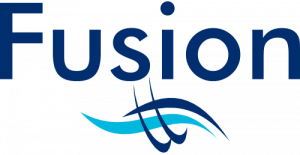 Many businesses report that customers are taking their time when researching their products or services. There’s often a significant delay between viewing product information on a web page and actually getting in touch with sales teams or buying through the site’s ecommerce platform.
Many businesses report that customers are taking their time when researching their products or services. There’s often a significant delay between viewing product information on a web page and actually getting in touch with sales teams or buying through the site’s ecommerce platform.
In fact, one business we recently supported tracked an average of 7 visits to a product page before visitors got in touch or purchased.
Creating greater engagement with your potential customers
The challenge for many then is that the user journey can start and end on a single product page but without a key event like enquiring, signing up for more information or purchasing. Not only can this adversely affect the bounce rates of those pages, it also means there’s work to be done building greater engagement with the visitor.
This engagement should build interest to want to learn more about that particular supplier/provider. It should also feature ways to strengthen the relationship with the potential customer.
5 strategies to progress and speed up the buyer journey
To keep on a visitor’s radar, help progress and speed up the buyer journey, here are a number of strategies we have supported businesses in instigating and tracking:
1 Treat the product page as a mini landing page (particularly if the visitor will have come directly from somewhere like Google Shopping). Don’t assume they’ve come via your home page. Test if you need to have more information about your organisation and value points, as well as the product information.
2 Offer something to enable data capture – a free guide, trial, sample, taster, podcast, video, discount, complimentary add-on for the product etc. Pick something which will align with the need this product solves – don’t just offer a standard e-newsletter. Choose something that’s of low cost for you, but of high value/interest to the visitor as they evaluate different offerings of this product.
3 Instigate Live Chat facility to help promptly answer any immediate questions they have as they view your product online. A good Live Chat agent should be trained to build rapport and support/shorten the buyer journey to an actual sale wherever possible.
4 Encourage dialogue through other channels so you have data capture and permission to keep in touch as the customer evaluates your product against others. Make it easy to request a call or email and be sure to have your team respond quickly.
5 Run a tailored retargeting campaign – retargeting campaigns are effective when they’re tailored to the user and timely. Ensure your cookie /privacy policy supports retargeting and then devise interesting, tailored and engaging ads which help you keep on users’ radars and build goodwill with them, not their annoyance.
Tracking users coming to your product pages
If you are running online ads which point to a specific product page, consider placing caps to stop users’ product research blowing your ad budget. We recently helped one organisation identify that a user had visited one of their product pages via Google Shopping over 1000 times before purchasing. Whilst this is an extreme case, you may want to create frequency caps for individual visitors in your online ad campaigns.
Finally check tags are set correctly on your product page so you can evaluate visitor behaviour and fine-tune elements. Above all, assess how users are coming to the page as this will help you to improve the user experience (knowing what they’ve seen prior to this point).
